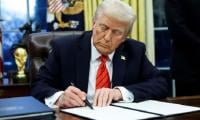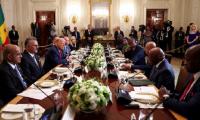Part - 1
Corruption is a buzz word in Pakistan. However, a broader definition of corruption than what is currently bandied about in the mainstream narratives, PTI-style, is required in order to recognise the problem of corruption in its entirety. Consequently, a thorough analysis of the workings of global (and local fractions of) capital, the post-colonial state and historical patterns of imperialism is required.
For instance, the class perks of feudal lords, pirs (often controlling local politics and waqf properties), or capitalist exploitation do not constitute corruption in the mainstream narratives. Likewise, institutionalised action by the civil and military bureaucracy do not merit as corruption. Private education and medical care, whereby the poor and marginalised sections of the population are systematically excluded, are not taken into account when corruption is characterised. National oppression, such as the plunder of Balochistan’s resources, is excluded from instances of corruption. Therefore, it is imperative to critically approach the very idea of corruption.
The author of the ancient Indian political treatise, Arthshastra (Economics), Kautiliya writes: “Just as it is impossible not to taste the honey (or the poison) that finds itself at the tip of the tongue, so it is impossible for a government servant not to eat up, at least, a bit of the king’s revenue. Just as fish moving under water cannot possibly be found out either as drinking or not drinking water, so government servants employed in the government work cannot be found out (while) taking money (for themselves).” He pointed out 40 ways of ‘embezzlement’ in ancient India (ca 370 BC).
Europe was hardly different. In an editorial, Marxist journal Monthly Review claims: “In early modern Europe, for instance, the job of collecting taxes was often ‘farmed’ out to individuals whose payment for the job came not from official state salaries but from raking off a share of the revenues. People could, and regularly did, even buy state offices, openly and unashamedly. The state apparatus of European absolutism couldn’t have functioned without practices which, in hindsight, we might call corrupt”.
According to Pranab Bardhan, corruption, even in most liberal discourses, refers to the use of public office for private gain whereby “an official (the agent) entrusted with carrying out a task by the public (the principal) engages in some sort of malfeasance for private enrichment which is difficult to monitor for the principal”.
This definition implies a firm Weberian dichotomy between public/impersonal and private/personal spheres. However, Max Weber was clear that such a dichotomy was an ideal type, hard to find in reality.
The Weberian hypothesis issues from the fact that capitalists, unlike feudal lords or absolutist officials, accumulate by way of market instead of appropriate surpluses by directly exploiting official or public power. In other words, to quote Monthly Review, “the conduct of public business is supposed to be separate from the process of private appropriation”. But both the history of capitalism and contemporary financial scandals betray capitalism’s commitment to anti-corruption.
According to E P Thompson, one corrupt method employed by the capitalists in the past was ‘lease-mongering’. The capitalists would buy up leases from poor tenants. These same leases were sublet to tenants at increased rents. In cases of non-payment tenants were evicted. Similarly, ‘forestalling’ and ‘regrating’ (‘black marketing’) were common capitalist practices at the dawn of capitalism. At the time, such practices were repugnant to prevailing morality in England/Europe and were resisted. Over time, as capitalism prevailed, such practices assumed institutional legitimacy, and became the ‘lawful and legitimate stuff of everyday capitalist life’.
This normalisation of once repugnant practices was not achieved through a strict separation of public/impersonal and private/personal. Similarly, despite the normalisation of practices once considered corrupt, and a narrow definition of corruption, capitalism has not been able to deliver the end of corruption. In fact, corruption assumes new forms with every passing day.
A host of financial scandals in recent years (Enron, Worldcom etc), consequently, have prompted even ‘anti-corruption theoreticians’ to define corruption more broadly. Recent definitions also point out ‘the illegitimate purchase by private actors of political consideration’ as well as ‘the abuse of trusted authority for private gain’. All such nuances are ignored when the establishment, PTI leadership and self-righteous anchorpersons engage in their jihad against corruption in Pakistan.
The question of corruption in Pakistan began to assume centrality since the mid-90s. However, corruption as a problem has always been an element in the country’s politics and socio-political discourses. Historically, anti-corruption has been employed by the country’s military regimes as a pretext to politically victimise the opposition. At present, the question of corruption in Pakistan is constantly agitated over in drawing rooms, TV talk shows, policy discussions and at various domestic and international seminars about the country. Much of the time, corruption is presented as the single most important problem bleeding the country’s exchequer and its people dry.
However, critical voices have questioned the mainstream wisdom on corruption. Economist Asad Sayeed, for instance, points out that five anti-corruption laws have been enacted in Pakistan, the first soon after the country’s independence in 1947. Likewise, there are three specialised anti-corruption agencies to check corruption in the country besides a myriad of bureaus in various departments. However, he points out, corruption remains “pervasive and endemic in Pakistan” despite the proliferation of various laws and anti-corruption institutions. This is because the issue of corruption, he argues, “is inextricably linked to the existing socio-political imbalances in Pakistan”. He views corruption as a symptom rather than a malaise in itself.
Likewise, Ayaz Mallick, a Toronto-based researcher, points out that “the common thread running through” all the mainstream arguments “is the pathologisation of ‘corruption’ itself ie its portrayal as something ‘extra-legal’, outside the ambit of propriety and an aberration from the norms of the ‘system’. This not only has the effect of sequestering the phenomenon as firmly outside the normal functioning of the system, but directly leads to the conclusion that ‘corruption’ is a moral problem, something carried out by persons whose moral radar is pointing in the incorrect direction”.
According to Mallick, this moralising implies that all Pakistan needs is to replace ‘amoral’ people with the right group of persons and all will be fine. “Hiding behind such pathologisation of corruption is an attempt, conscious or subconscious, to ignore the systemic, structural issues which give rise to what is defined as “corruption” in mainstream discourse,” he concludes. Consequently, while over-simplified “individual/institutional ‘solutions’ for the issue abound”, there is a tendency to ignore “deep structural issues”.
Both Mallick and Sayeed attribute a class bias as well to the mainstream anti-corruption discourses. While, according to Mallick, structural issues are ignored at the cost of the much-touted ‘common man’, Sayeed thinks that the “hoopla on corruption is generally an urban middle class phenomenon” whereby “the underlying context is Pakistan’s fraught history of civil-military imbalances.”
He views the chorus against corruption as the political expression of a class that is against representative democracy in Pakistan. He argues, “A proper debate on corruption will only occur when we start debating impunity enjoyed by the propertied classes and the non-elected arms of the state”.
To be continued
The writer is a freelance contributor.
Email: mfsulehria@hotmail.com
This representational image shows the Power Project. — APP/FileAt the core of the latest attempted “renaissance”...
Zohran Mamdani gestures as he speaks during a watch party for his primary election, which includes his bid to become...
This photograph taken on November 19, 2015 shows employees of online marketplace company in Karachi, Pakistan. —...
A representational image of tax shows wooden boxes with letters T, A and X written on them. — Reuters/FileEconomists...
This representational image shows a person working on Laptop. — Unsplash/FileIn a modest Lahore flat at 2am, he...







